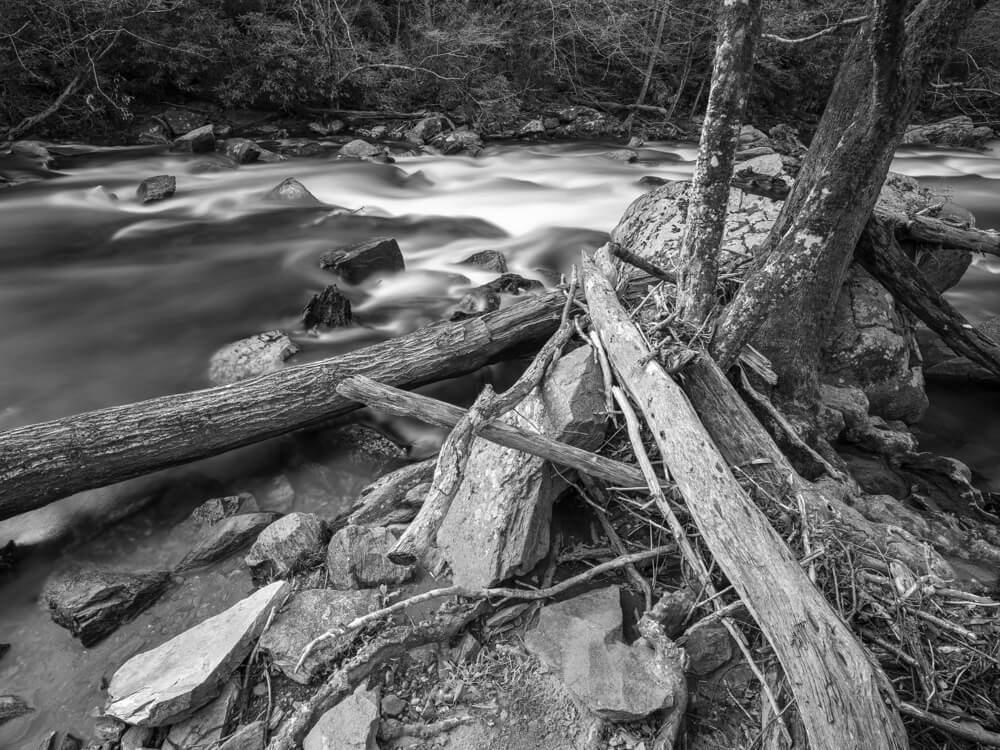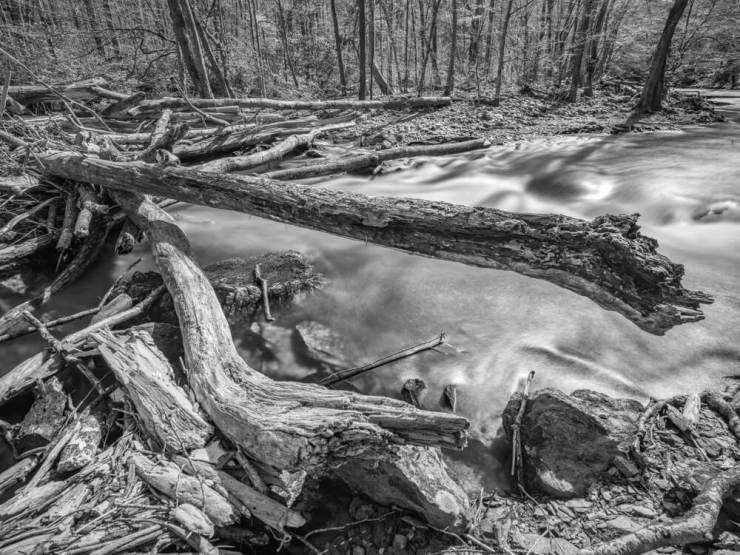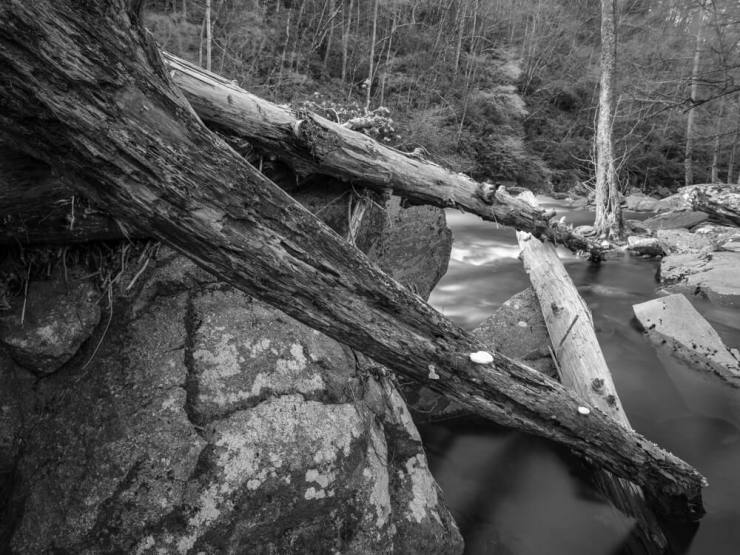Vantage Point
One of the best ways a photographer can make his or her work unique is to understand the importance of Vantage Point.
In a very basic sense, if you photograph looking up to a subject you make it heroic, bigger than life. Viewing the subject at eye level infers equality with your subject. Photographing down on a subject gives an impression of superiority to it.
In April I helped lead a Visionary Wildworkshop with Charlie Cramer in the Great Smoky Mountains National Park. Based in Townsend (TN), the quiet side of the Smokies, the subject matter was primarily the area’s landscape. I arrived early in the week to photograph for myself before the workshop began. Drawn to the timber carried and gathered by the Little River between Elkmont and Townsend, I worked to create photographs that showed the power of water to move these massive logs.

My first location, up on the side of the road looking down at the logs held back between a tree and massive boulder, I photographed the dam and rushing water in the background. After several tries, I created an image that had reasonably good composition, foreground-background, leading lines, a sense of motion, and demonstrated the power of the river to bring logs downstream.

I followed the stream eventually finding another exciting place the river had piled logs. Using a variety of lenses and neutral density filters, I tried again to bring this power of the Little River to life in my photograph. The log running across the frame reminded me of a stiff serpent, one end the head and the rest of the log its transformed body. The vantage point is positioned slightly down at the wood and the river.

I continued driving, all the way from Townsend to Elkmont and back again. Finally, I returned to the very first location. There had to be a better image that I could make. I moved down to the water’s level, determined to find a different vantage point. After half an hour climbing over wet rocks, I felt I had made the image I was looking for.
In fact, there were two images, variations on a theme. In the first, two logs come out of the upper right corner lodged against the rock, one looming above my head.
In the second I moved to the right and noted the gesture of the center log and the stone emerging from the water. In this image, there is a small stick resting against the large rock and speaks to the fact that not everything the river carries is large.

Some might say the first of these two images is more dynamic but I prefer the serenity of the calm water behind the log dam, being on par with the logs but not threatened, and the beauty of the white wood and the white rock mirroring each other. I think both images work because of the different vantage points from which they were made.
tillman